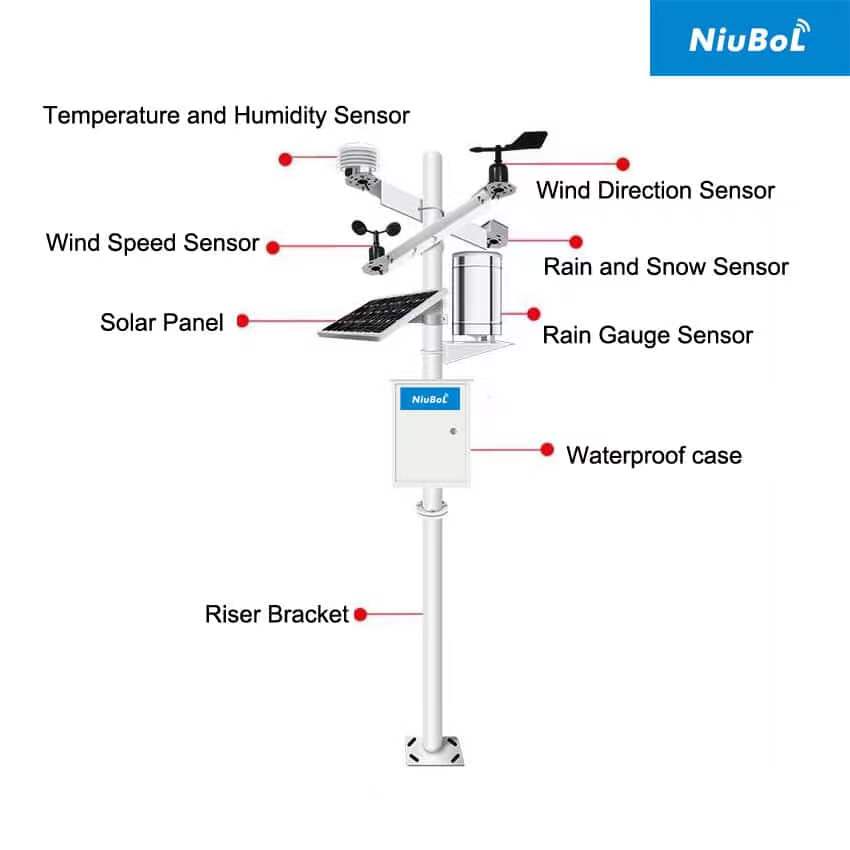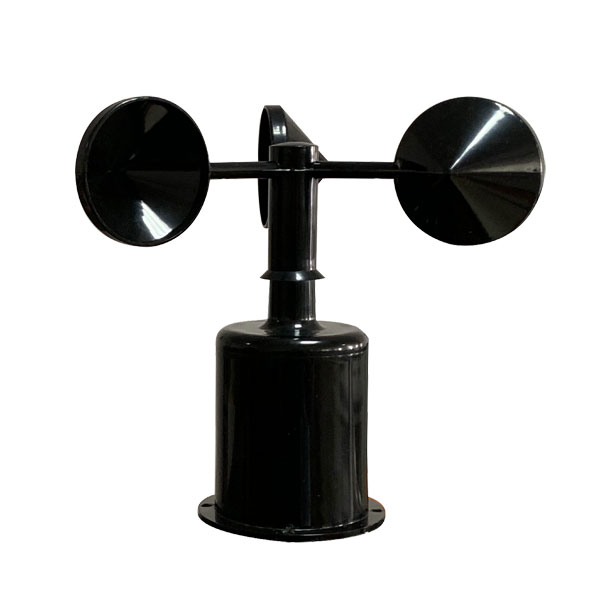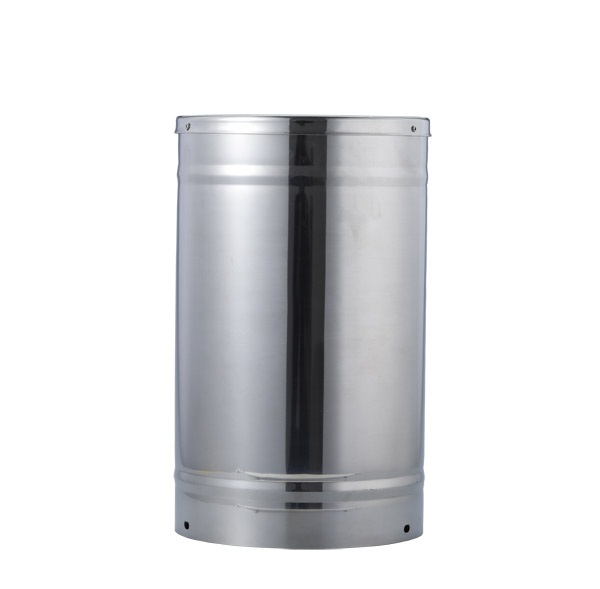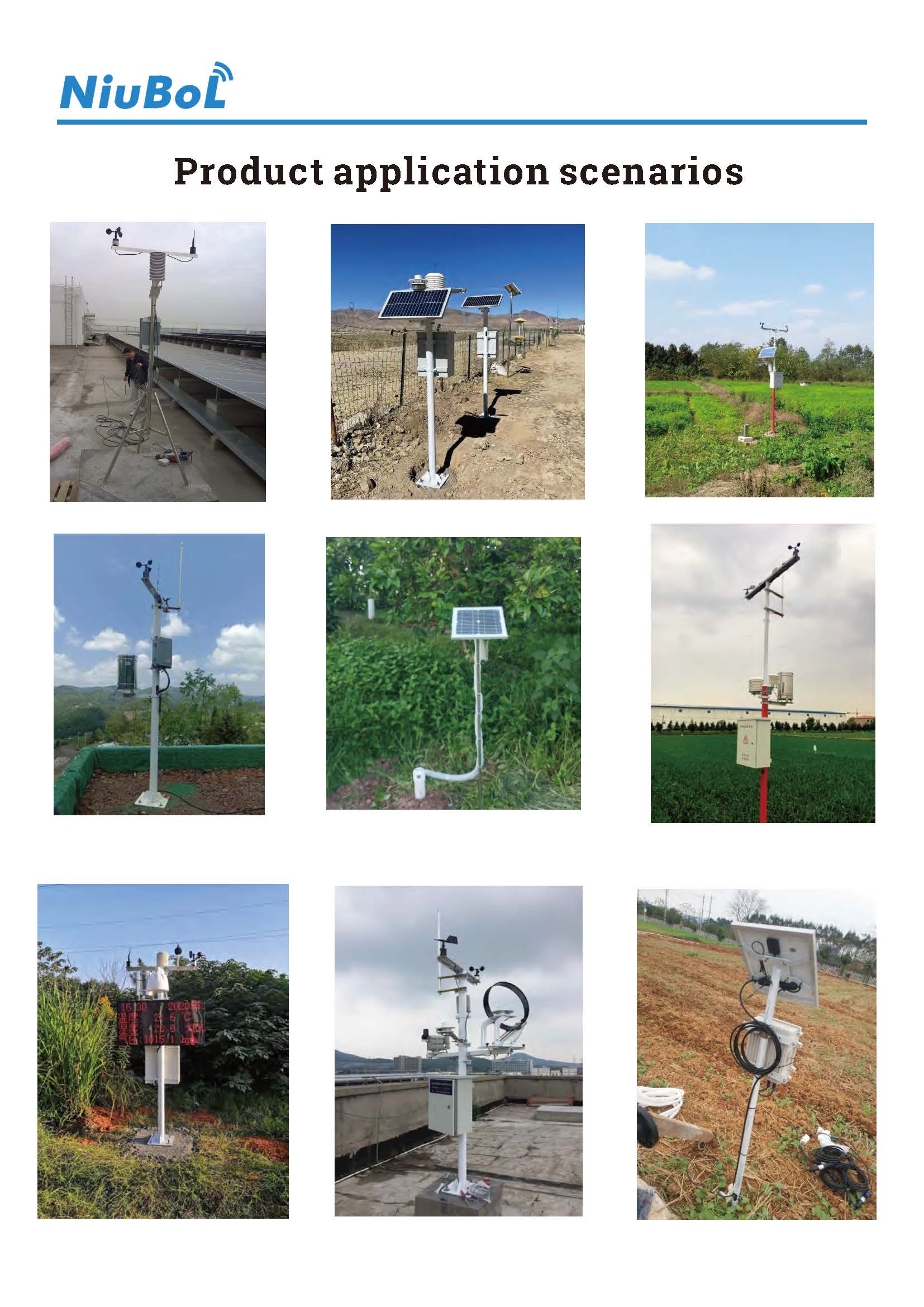

— Products —
 Consumer hotline +8618073152920
Consumer hotline +8618073152920 WhatsApp:+8615367865107
Address:Room 102, District D, Houhu Industrial Park, Yuelu District, Changsha City, Hunan Province, China
All products
weather station with rain gauge and wind speed, often referred to as an automatic weather station or rain weather station, is an unattended weather collection system that integrates a variety of environmental monitoring sensors. This kind of weather station collects and transmits weather data in real time through temperature sensors, humidity sensors, rain gauges, wind speed sensors, wind direction sensors, etc., which provides important data support for many fields such as w···
Tel/WhatsApp:+8615367865107
Email:Arvin@niubol.com +Nearly 100 partner company in more than 68 countries. We are committed to providing high-quality, practical products to meet your needs and help you solve problems.Product Details
A weather station with rain gauge and wind speed, often referred to as an automatic weather station or rain weather station, is an unattended weather collection system that integrates a variety of environmental monitoring sensors. This kind of weather station collects and transmits weather data in real time through temperature sensors, humidity sensors, rain gauges, wind speed sensors, wind direction sensors, etc., which provides important data support for many fields such as weather forecasting, agriculture, traffic, environmental protection, etc.
 |  |  |  |
| Weather station with rain gauge and wind speed | wind speed sensors | Tipping bucket rain gauge | wind direction sensors |
Introduction of Weather Station with Rain Gauge and Anemometer
The weather station with rain gauge and wind speed consists of the following main parts:
environmental monitoring sensors: including rain gauge, wind speed sensor, wind direction sensor, etc., which are used for real-time measurement of meteorological elements such as rainfall, wind speed and wind direction.
Tipping bucket rain gauge: Tipping bucket rain gauge is a real-time observation of rainfall data digitisation of important rainfall observation instruments, widely used in meteorology, hydrology, agriculture and other fields, used to measure and record rainfall.
Tipping bucket rain gauge Core components and working principle:
Working Principle: Rainwater enters into the water receiver from the topmost rain-bearing opening, falls into the water receiving funnel, and flows into the tipping bucket through the funnel opening. When the amount of water reaches a certain height (e.g. 0.1mm, 0.2mm, 0.5mm optional), the tipping bucket loses balance and tips over. Each dumping of the hopper makes the switch turn on the circuit, delivering a pulse signal to the recorder, which records the rainfall accordingly.
Wind speed sensor: wind speed sensor is a device used to measure wind speed, widely used in meteorology, agriculture, ships and other fields, used to obtain wind speed information.
Types and working principle: mainly include mechanical wind speed sensor and ultrasonic wind speed sensor.
Working Principle:
Mechanical type: the wind force generated by air flow pushes the sensor to rotate, and the central axis drives the internal sensing element to generate pulse signals, and the wind speed and pulse frequency become a certain linear relationship.
Ultrasonic type: wind speed is calculated by calculating the difference in transmission time of ultrasonic waves between two points, avoiding the influence of temperature on sound speed.
Wind Sensor: Wind Sensor is a physical device that detects and feels the wind direction information of the outside world with the rotation of the wind arrow, and transmits it to the coaxial code disc, and outputs the corresponding wind direction related numerical value at the same time. It is widely used in meteorology, ocean, environment, agriculture, forestry, water conservancy, electric power, scientific research and other fields.
Depending on the complexity of the meteorological station, it may also include:
- Temperature and humidity sensors:Measure ambient air temperature and humidity, which are key factors in weather conditions.
- Barometers:Measure atmospheric pressure to predict upcoming weather changes, such as storms.
- Photovoltaic Sensors:Measure solar radiation, which is important for understanding applications such as energy balance and solar power generation.
Data Collector Module:Responsible for processing, converting and storing the raw data collected by the sensors.
Wireless Transmission Module:Transmits the collected meteorological data in real time to a server or cloud platform via 4G, 5G or Ethernet.
Server software/cloud platform: used for receiving, storing, analysing and displaying meteorological data, providing functions such as data query, downloading and sharing.
In addition, these weather stations are often powered by solar energy systems with built-in wide-temperature colloidal maintenance-free batteries to ensure that they can work normally even in the field, forest fire prevention, flash flood monitoring, etc., where there is no utility power supply.
Application Scenarios of Weather Station with Rain Gauge and Wind Speed
1.Weather forecasting:
The data collected by weather station can be used for the establishment and validation of weather models to improve the accuracy of weather forecasting.
real-time monitoring of rainfall and wind speed changes provides an important basis for the early warning of catastrophic weather, such as heavy rain and high winds.
2.Agriculture:
monitors rainfall and wind speed in farmland, greenhouses, tea gardens, orchards and other areas to help farmers reasonably arrange farming activities such as irrigation, fertiliser application and pest control.
By analysing soil moisture and rainfall data, it optimises the crop growing environment and improves crop yield and quality.
3.Transport:
installs weather stations at ports, airports, motorways and other key traffic routes to monitor changes in wind speed and direction in real time, providing data support for traffic scheduling and safety management.
Adjust travelling routes in time under bad weather conditions to reduce traffic accidents and traffic congestion.
4.Environmental Protection:
monitors air quality, pollutant emissions and other environmental indicators, and assesses the impact of meteorological conditions on air quality.
Provide timely meteorological data support in emergencies such as forest fires to provide strong protection for rescue work.
5.Scientific research and teaching:
is used as a teaching and scientific research tool for meteorology, environmental science and other related disciplines, providing students with opportunities for practical operation.
is used for experimental and data collection work in scientific research projects to promote academic research and development in related fields.
6.Other fields:
In the fields of fishery and navigation, it provides marine meteorological data support to ensure the safety of fishery production and sea navigation.
In the field of construction, it is used to monitor meteorological conditions at construction sites to ensure construction safety and progress.
In summary, weather stations with rain gauges and wind speeds are essential tools for monitoring local weather conditions. Rain gauges measure the amount of rainfall, while wind speed sensors detect the speed of the wind. Some advanced models may also include additional sensors for measuring temperature, humidity, atmospheric pressure, and even UV levels.

Whether you're a weather enthusiast or a professional meteorologist, having a weather station with a rain gauge and wind speed sensor allows you to effectively track weather patterns and make informed decisions based on current weather conditions. This setup is especially useful in areas prone to extreme weather events or where accurate weather data is critical to daily operations.
Sensors & Weather Stations Catalog
Agriculture Sensors and Weather Stations Catalog-NiuBoL.pdf
Weather Stations Catalog-NiuBoL.pdf
Related recommendations
 Multi-Depth Soil Sensor RS485
Multi-Depth Soil Sensor RS485 TDR Soil Moisture Sensor
TDR Soil Moisture Sensor Pyranometer Solar Radiation Sensors
Pyranometer Solar Radiation Sensors Soil ph sensor
Soil ph sensor Tipping Bucket Rain Gauge
Tipping Bucket Rain Gauge Air Temperature and Humidity Sensor
Air Temperature and Humidity Sensor
Screenshot, WhatsApp to identify the QR code
WhatsApp number:+8615367865107
(Click on WhatsApp to copy and add friends)